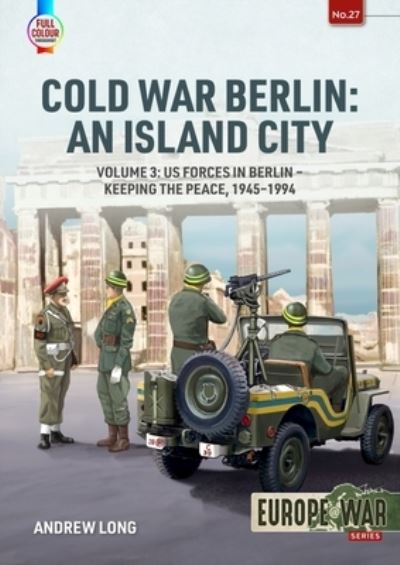
At the end of the Second World War, the victorious allies split Germany into four Occupation Zones, one each for the British, Americans, French and Soviets. Berlin, the capital of the former Third Reich was deep inside the Soviet Zone, but the Western Allies did not want to leave this jewel in the crown to Stalin and insisted on dividing the city up into four occupation sectors, split along similar lines. As the months turned into years, there was nothing Stalin could do to persuade the Western Allies to leave the city and the relationship between these former allies crumbled into distrust, obstruction, acrimony, and the first skirmishes of a new Cold War. Although it was 100 miles inside Soviet Zone (which became East Germany), Berlin became the frontline in this new conflict. The Western Allies established sizeable garrisons in their sectors, and while they trained hard for World War Three, they were under no illusions - their role was as a tripwire, to hold out for as long as possible to buy negotiation time for London, Washington D.C., and Paris to stop the situation escalating into a full-scale nuclear exchange. But despite the constant shadow of annihilation, Berlin was a plum posting for Allied soldiers, where they enjoyed better living conditions, and all the distractions, cultural or otherwise, and the bright lights of one of Europe's most cosmopolitan and vibrant cities. Berlin presented some unique challenges as to be expected with an island surrounded by hostile forces. Getting to get to the city in the first place was not straightforward, travelling along heavily controlled road, rail, and air corridors where the rights of passage were as jealously protected as the sectors of the city itself. The garrisons needed to be completely self-sufficient and were constantly kept on a war footing, with alert troops at five minutes readiness. They were supported by tanks and artillery, plus all the logistics and support functions to look after thousands of troops, and their families, including schools, hospitals, shopping centres, theatres, and cinemas. There was also the important job of state building, seeing the role changing from conqueror, to military government, to civilian oversight, to the new sovereign state of West Germany. This is the extraordinary story of how the Western Alliance defended the enclave of West Berlin: the forces involved; how they were structured; the equipment they used; where they were based; and how they fitted in with the wider defence of Western Europe by NATO. It looks closely at the roles played by the garrisons in the city, their regular duties, special events and their constant training. Extensively illustrated throughout with photographs, maps, diagrams, and tables, it continues the mini-series on Cold War Berlin from this author, and covers the whole of the Cold War, from the end of the Second World War in 1945 to German re-unification in 1990.
| ISBN: | 9781804510292 |
| Publication date: | 15th October 2022 |
| Author: | Andrew Long |
| Publisher: | Helion & Company |
| Format: | Paperback |
| Pagination: | 112 pages |
| Series: | Europe@war |
| Genres: |
Military history Far-left political ideologies and movements Left-of-centre democratic ideologies |